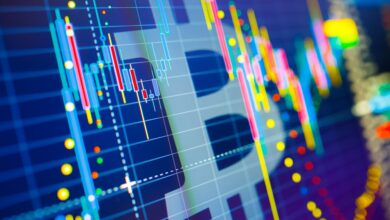Harsh Truth Behind the Terra Luna Narrative

The fall from grace of the Terra Luna network indicated one of the worst catastrophes the crypto ecosystem has ever witnessed. The network crashed and rebranded while developing a multiverse ecosystem in the aftermath.
Early last year, Do Kwon, the Chief Executive Officer and co-founder of Terraform Labs, the organization behind Terra Luna, purportedly withdrew and pulled out 3.9 billion dollars worth of Terra algorithmic digital assets from the lending network constructed on the Terra Luna blockchain.
The large withdrawals influenced the decline in the price of TerraUSD, whose one-dollar peg receives support from the distribution of Terra native stablecoin, LUNA. The Terra Luna distribution varied to maintain TerraUSD’s stable one-dollar price.
When the price of Terra Luna dropped, it pushed the distribution to unbelievable highs and adversely crashed the value. LUNA and TerraUSD lost more than 99% of their worth in less than seven days. This induced fear amongst the whole crypto ecosystem and crashed the value of several digital stablecoins, including the initial coin, Bitcoin.
In May last year, the Chief Executive Officer announced to fork from the protocol, which led to the launch of Terra Luna 2.0. The previous one was maintained and renamed Terra Classic, kept the same digital asset, and rebranded as TerraClassicUSD.
The co-founder, Do Kwon, left the project and finally went into hiding over tax evasion, fraud, and money laundry in South Korea. Several investors and traders were adversely losing their digital assets.
Importance of Terra Luna Initiative
Meanwhile, the Terra Luna network victims looked for alternatives to stay alive and finally wandered into different teams with similar interests in resurrecting the protocol. The campaign to donate to Terra Luna token burning began.
The whole idea behind crypto burning is to extract digital assets from circulation. The tokens are distributed to the wallets so they cannot be retrieved, adversely reducing the distribution. The reduction in distribution means an increase in the value of digital assets.
In the recent past, the estimated distribution of Terra Classic digital assets was more than 6.87 trillion, burning only thirty-six billion, a total of 0.52% of the total asset distribution.
If the burning continues at a comparable rate, it might take over seventy-three years to burn trillions of digital assets and lower the supply to around 10 billion.
However, the Terra Luna developers established the campaign of implementing the burn taxes on every transaction on the digital asset to enhance the process. If applied, the innovation would have made a step forward, specifically if one of the major crypto exchanges that generate large volumes accepted to propel the project.
Terra Rebels Crash
Terra Rebels developers team succeeded Terra Classic space after the co-founder left the protocol. Terra Rebels contributed to the narrative of increasing a 1.2% burn tax on Terra Luna exchanges to enhance digital asset burning. However, it later reduced to 0.2%.
The Terra rebels accumulated around 150,000 dollars in contributions from the Terra community to execute their ideas and plans. The Terra Luna community later discovered that the Terra rebels were exploiting the funding and dividing them between members instead of capitalizing on blockchain-based projects.
Since the collapse of Terra Luna early last year, the stablecoin holders are still dealing with the horror of the catastrophic event. Once the co-founders left, the loyal digital stablecoin investors and traders still have yet to regain their financial stability.
FellowNeko / Shutterstock.com







